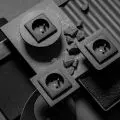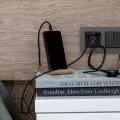Thermal insulation
To ensure the highest comfort in a room, attention should be paid to many aspects, but the key one is to ensure warmth, i.e. the use of proper thermal insulation of all building partitions.
Why use thermal insulation
Everyone wants to have warm rooms. However, this is not the only argument for using thermal insulation. We live in a climate in which winter temperatures can drop well below zero. This is when the cost of heating a building increases. With poorly adapted thermal insulation, or lack thereof, heating costs will increase significantly. Applying insulation, can be an investment that in a few years will significantly reduce heating fees.
what are thermal bridges?
Thermal bridges are the places where the building envelope meets adjacent elements with much higher thermal conductivity coefficient and made of different materials. These are, for example, the place where the balcony meets the building wall, the roof meets the exterior walls, or the places where windows are set. Through such places there is an uncontrolled loss of a significant amount of heat from the building. Not only does this hit our wallets, as heating bills are higher, but thermal bridges can also be hazardous to health. Where they form, the wall surface temperature often drops to the dew point, or condensation. In such a case, the walls can become damp and multiply bacteria, fungi and mold, which are very dangerous to human health. Therefore, properly placed thermal insulation should be on the outside of the walls, at the same time so that in the best possible way, eliminate thermal bridges and accumulate heat in the walls as much as possible.
Is it true that the thicker the insulation layer the better?
This is not quite the case. Of course, the thicker the insulation material, the better it will protect the building. However, the thickness, such as styrofoam, should be properly proportioned to the building's construction material. Too little thickness or quantity may not provide adequate insulation, making it impossible to achieve a good heat transfer coefficient. Conversely, too much of it or its thickness may prove to be superfluous, making the difference in heat loss low enough to make the investment uneconomical.























